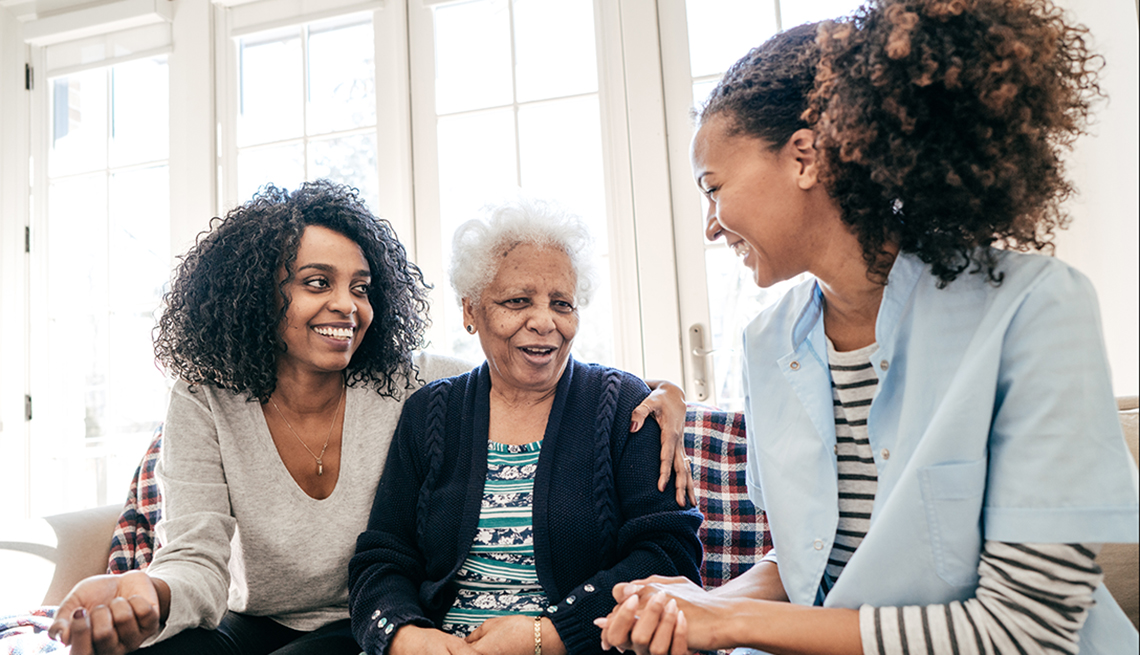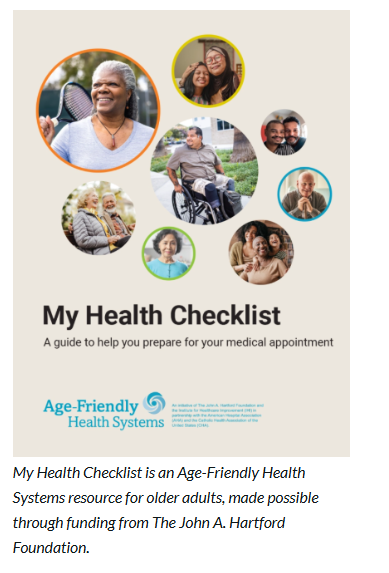AARP Hearing Center
About
When it comes to their health, older adults should have their voices heard. But all too often, conversations with health professionals – and even family members – can leave older adults feeling like their concerns were brushed aside. To better empower older patients, combat ageism in the health system, and ultimately improve care, AARP is working with health professionals to promote age-friendly health. At the heart of this effort are four Ms:
· What Matters — ensuring care aligns with each patient’s goals and values
· Medication — optimizing treatment for safety and simplicity
· Mind — supporting brain health and emotional well-being
· Mobility — promoting independence and preventing avoidable harms
By focusing on the four Ms, we can promote age-friendly health care that ensures older adults are treated with the respect, dignity, and attention they deserve.


Age-Friendly Health and My Health Checklist
Age-friendly health care is a direct and powerful way to confront ageism in the health system, shift our culture of care, and support older adults in their interactions with health professionals. To those ends, AARP collaborated with the Institute for Healthcare Improvement’s Age-Friendly Health Systems team on the introduction of a new resource: My Health Checklist.


My Health Checklist uses the four Ms framework to help older adults identify concerns that are most important to them – and prepares them to share those concerns in their medical appointments.
My Health Checklist can also serve as a valuable resource for health organizations. Recently, AARP and IHI led a Community of Practice composed of a dozen groups working to utilize My Health Checklist, and workshopped ways of introducing the resource to members of their teams, as well as to patients and their caregivers, where applicable. As a leader at one participating organization said, “My Health Checklist, for me, is just a wonderful tool to help individuals prepare for shared decision-making.” Another spoke about the importance of age-friendly health care, saying “It’s addressing the ageism, the implicit bias that may get in the way of us hearing older adults when they are trying to express their needs.”
Watch the videos below for additional perspectives from health professionals who have implemented the My Health Checklist.
How shared decision making leads to more meaningful care, featuring Kerri Maya, PhD(c), MSL, RN, NPD-BC
Engaging the community with the 4Ms, featuring Nicole J. Brandt, PharmD, MBA, BCGP, FASCP and Daniel Z. Mansour, PharmD, MS, AGSF, BCGP, FASCP






























































